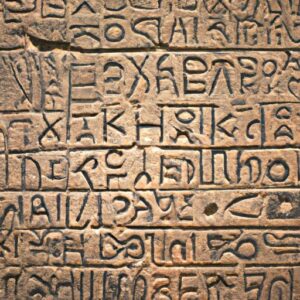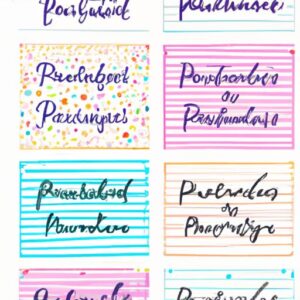Introduction
Writing and art are two creative endeavors that have captivated humanity for centuries. But have you ever wondered if writing can truly be considered a form of art? In this article, we will embark on a journey to explore the connection between writing and art, delving into the depths of their similarities, and uncovering the artistic essence that lies within the written word.
A. Definition of writing
Writing, in its simplest form, can be defined as the act of putting thoughts, ideas, and emotions into words and symbols. It is a means of communication, allowing individuals to convey their deepest thoughts and express themselves to others. From prose to poetry, scripts to essays, writing encompasses a diverse range of genres and forms.
B. Definition of art
Art, on the other hand, is a broad term that encompasses various creative disciplines, including visual arts, music, dance, and more. It is the expression or application of human creative skill and imagination, producing works that are appreciated for their beauty or emotional power. Art is a medium through which artists communicate their thoughts, emotions, and ideas to the world.
C. Brief overview of the article’s focus on exploring the connection between writing and art
In this article, we will delve into the question of whether writing can be considered a form of art. We will explore the creative process involved in writing, the expressive elements that make it akin to traditional art forms, and the medium’s ability to serve as a vehicle for self-expression. By examining the artistry of language and linguistic techniques used in writing, we will shed light on the artistic nature of this captivating form of communication.
Buckle up and join me on this enlightening journey as we unravel the artistic tapestry of writing and discover its rightful place among the realms of art. Together, let’s explore the magic that lies within the written word and unleash our creative spirits through the captivating art of writing.
Exploring Writing as an Art Form
Writing is not merely a mechanical process of stringing words together; it is an art form that requires creativity, imagination, and a deep understanding of the human experience. Let’s delve into the various aspects that make writing a true form of art.
A. Understanding the creative process involved in writing
Writing is a creative endeavor that begins with a spark of inspiration. It is a process of transforming abstract thoughts and ideas into tangible words on paper or screen. Just like a painter starts with a blank canvas, a writer starts with a blank page, using their imagination to paint vivid pictures and evoke emotions through their words. The creative process involves brainstorming, drafting, revising, and refining, much like the sculpting of a masterpiece.
B. Highlighting the expressive and imaginative elements of writing
Writing allows individuals to express their innermost thoughts, feelings, and experiences in a way that resonates with others. It provides a platform for self-expression, enabling writers to explore complex emotions, challenge societal norms, and convey their unique perspectives. Through storytelling, writers can transport readers to different worlds, ignite their imaginations, and evoke a wide range of emotions.
C. Examining the use of language, style, and structure in writing as artistic choices
Language, style, and structure are crucial elements in writing that contribute to its artistic value. Writers carefully select words, phrases, and literary devices to create a specific mood or tone, much like a painter chooses colors to evoke certain emotions. The rhythm, flow, and cadence of the writing also play a significant role in creating artistic effects. Moreover, the structure of a piece, whether it is a well-crafted sonnet or a captivating novel, adds depth and complexity to the artistry of writing.
As we explore the creative process, expressive qualities, and artistic choices in writing, it becomes evident that writing is indeed a form of art. It allows us to connect with others on a profound level, transcending barriers of time and space. So, let’s continue our journey of discovering the artistry within the realm of writing and unravel the magic that lies within its carefully crafted words.
Writing as a Medium of Self-Expression
Writing is a powerful tool that allows individuals to convey their thoughts, emotions, and experiences in a profound and personal manner. It serves as a medium of self-expression, enabling writers to share their unique perspectives with the world. Let’s delve deeper into the significance of writing as a means of self-expression and its connection to the world of art.
A. Examining how writing allows individuals to convey their thoughts, emotions, and experiences
Writing provides a platform for individuals to articulate their innermost thoughts, emotions, and experiences. It allows us to capture fleeting moments, immortalize memories, and explore the depths of our imagination. Through the written word, we can communicate our joys, sorrows, and everything in between. Whether it’s through poetry, prose, or personal narratives, writing offers a space for introspection and self-discovery.
B. Discussing the subjective nature of interpretation in writing and art
Both writing and art are subjective forms of expression, open to interpretation by the reader or viewer. Just as a painting may evoke different emotions and meanings for different individuals, writing too can be interpreted in various ways. The beauty of this subjectivity lies in the freedom it grants both the creator and the audience. It allows for a diverse range of perspectives and fosters dialogue and connection among individuals.
C. Highlighting the personal and unique voice that writers bring to their work
Every writer possesses a personal voice, a distinctive style that sets them apart from others. This unique voice is akin to an artist’s brushstroke or a musician’s melody. It breathes life into the written word, infusing it with personality, emotion, and authenticity. It is through this voice that writers leave their mark on the world, creating works of art that resonate with readers on a deep and personal level.
In conclusion, writing serves as a powerful medium of self-expression, allowing individuals to convey their thoughts, emotions, and experiences. It shares a common thread with traditional art forms in its subjective nature and the personal and unique voice that writers bring to their work. In the next section, we will explore the artistry of language and linguistic techniques in writing, further cementing its place as a form of art.
Conclusion
Throughout this exploration, we have unraveled the intricate connection between writing and art, shedding light on the artistic essence embedded within the written word. From the expressive and imaginative elements of writing to its role as a medium for self-expression, it is evident that writing holds a rightful place among traditional art forms.
By delving into the artistry of language and linguistic techniques, we have uncovered the power of literary devices, rhythm, and descriptive language in creating artistic effects within writing. These elements not only captivate readers but also evoke emotions and paint vivid pictures in their minds.
Just like a painter uses brushstrokes to create a masterpiece or a musician employs notes to compose a symphony, a writer harnesses the power of words to craft their own artistic creation. Writing is an art form that allows individuals to express their unique voice, share their stories, and provoke thought and emotion in others.
So, the answer to the question “is writing a form of art?” is a resounding yes. It is a creative endeavor that exudes beauty, evokes emotion, and leaves a lasting impact. As we conclude this journey, let us appreciate the artistic value of writing and encourage others to explore their own creative potential in this captivating medium.
In the realm where words and art intertwine, let us continue to celebrate the magic of writing, for it is indeed a form of art that has the power to inspire, transform, and connect us all.





